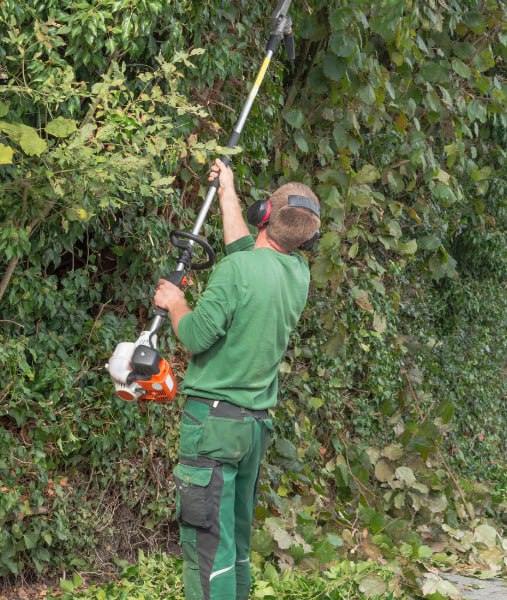
Introduction: Trees are essential for maintaining the beauty of our landscapes and play a crucial role in the environment by providing oxygen, purifying the air, and offering habitat to various wildlife. However, like any other living organism, trees are susceptible to diseases that can weaken or even kill them if left untreated. In this blog post, we’ll delve into the world of tree diseases, exploring their symptoms, prevention, and treatment to help you ensure the health and longevity of your beloved trees.
Common Tree Diseases
- Dutch Elm Disease: Dutch Elm Disease (DED) is a fungal disease primarily affecting elm trees. Bark beetles transmit it and cause wilting, yellowing leaves, and eventual death in infected trees.
- Oak Wilt: Oak Wilt is a serious disease affecting oak trees. It is caused by a fungus that disrupts the tree’s vascular system, leading to wilted and discoloured leaves, defoliation, and death.
- Fire Blight: Fire blight is a bacterial disease primarily affecting apple and pear trees. It causes wilting, blackened branches, and a scorched appearance, resembling fire damage.
- Powdery Mildew: Powdery mildew is a common fungal disease that affects various tree species, including roses, apples, and maples. It appears as a white powdery substance on leaves and can lead to stunted growth.
- Chestnut Blight: This fungal disease has been devastating to American chestnut trees. It creates cankers on the trunk, eventually killing the tree.
Symptoms of Tree Diseases
Identifying the symptoms of three diseases is crucial for early intervention. Common signs include:
- Leaf Discoloration: Look for leaves that are discoloured, yellowing, or browning, especially if the discolouration occurs out of season.
- Wilting: Trees that suddenly wilt, with branches or leaves drooping, may be infected with a disease.
- Cankers are sunken or swollen areas on the trunk or branches, often with discoloured or dead tissue.
- Fungus or Mold: The presence of fungal growth or mould on the tree’s bark or leaves clearly indicates a problem.
Preventing Tree Diseases
Prevention is the best approach to tree disease management. Here are some preventive measures you can take:
- Proper Tree Care: Maintain good tree health through regular pruning, mulching, and watering. Healthy trees are more resilient to diseases.
- Plant Resistant Species: When choosing new trees for your landscape, consider species less susceptible to common diseases in your area.
- Monitor and Inspect: Regularly inspect your trees for any signs of disease. Catching problems early can make treatment more effective.
- Avoid Wounding: Minimise wounds to your trees from lawnmowers, trimmers, or other equipment, as they can provide entry points for pathogens.
- Adequate Spacing: Ensure trees are properly spaced to allow for good air circulation,
reducing the likelihood of disease spread.
Tree Disease Treatment
If you suspect one of your trees is infected, it’s important to act swiftly. Treatment options may include:
- Pruning: Removing infected branches to prevent the disease from spreading further.
- Fungicides and Bactericides: Apply appropriate chemicals to control fungal or bacterial infections.
- Soil Amendments: Improving soil conditions can help strengthen the tree’s immune system.
- Professional Arborist: Consult a certified arborist for a proper diagnosis and treatment plan tailored to your specific tree and disease.
Conclusion: Understanding tree diseases, their symptoms, prevention, and treatment is crucial for the health and longevity of your trees. By taking proactive steps to prevent disease and seeking professional help when needed, you can protect your trees and enjoy their beauty for years to come. Remember, a healthy tree is an asset to your property and a vital contributor to our environment.
Call us on: 01795 718597
Click here to find out more about Sheppey Tree Surgeons
Click here to complete our contact form and see how we can help with your tree’s needs.